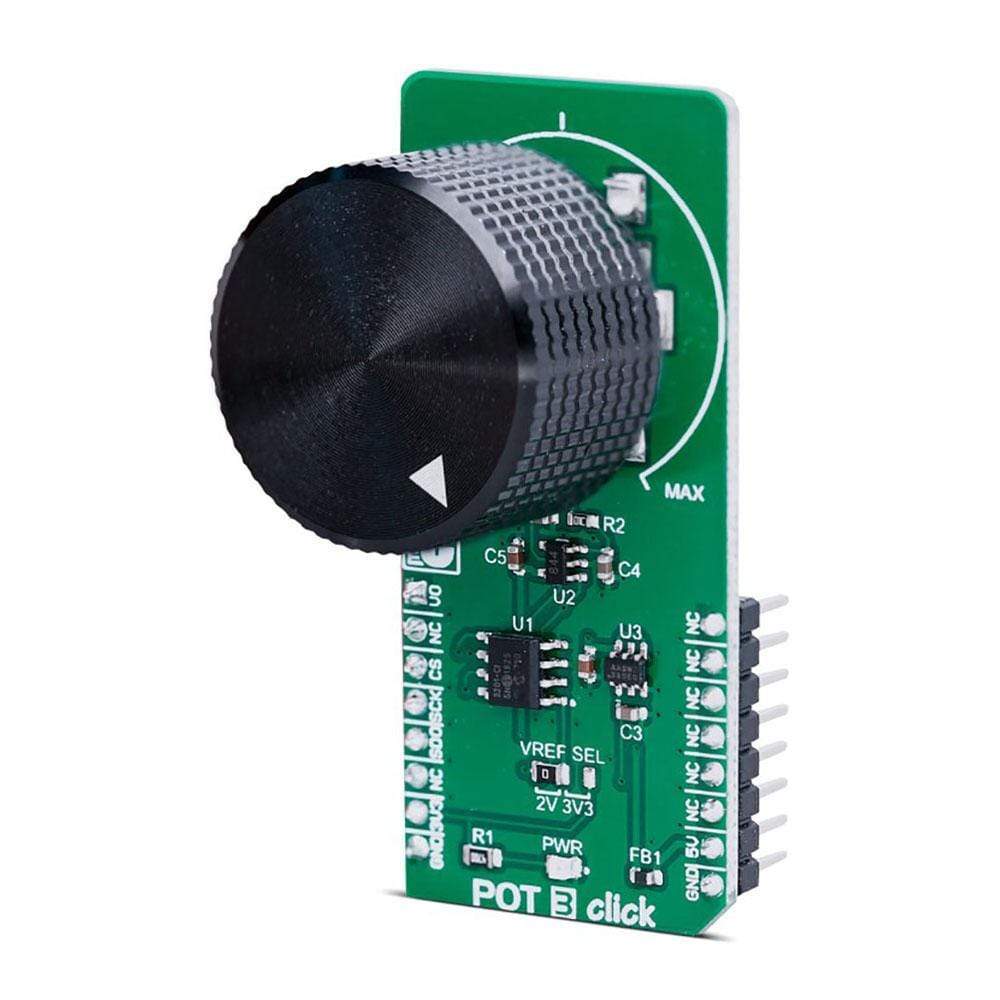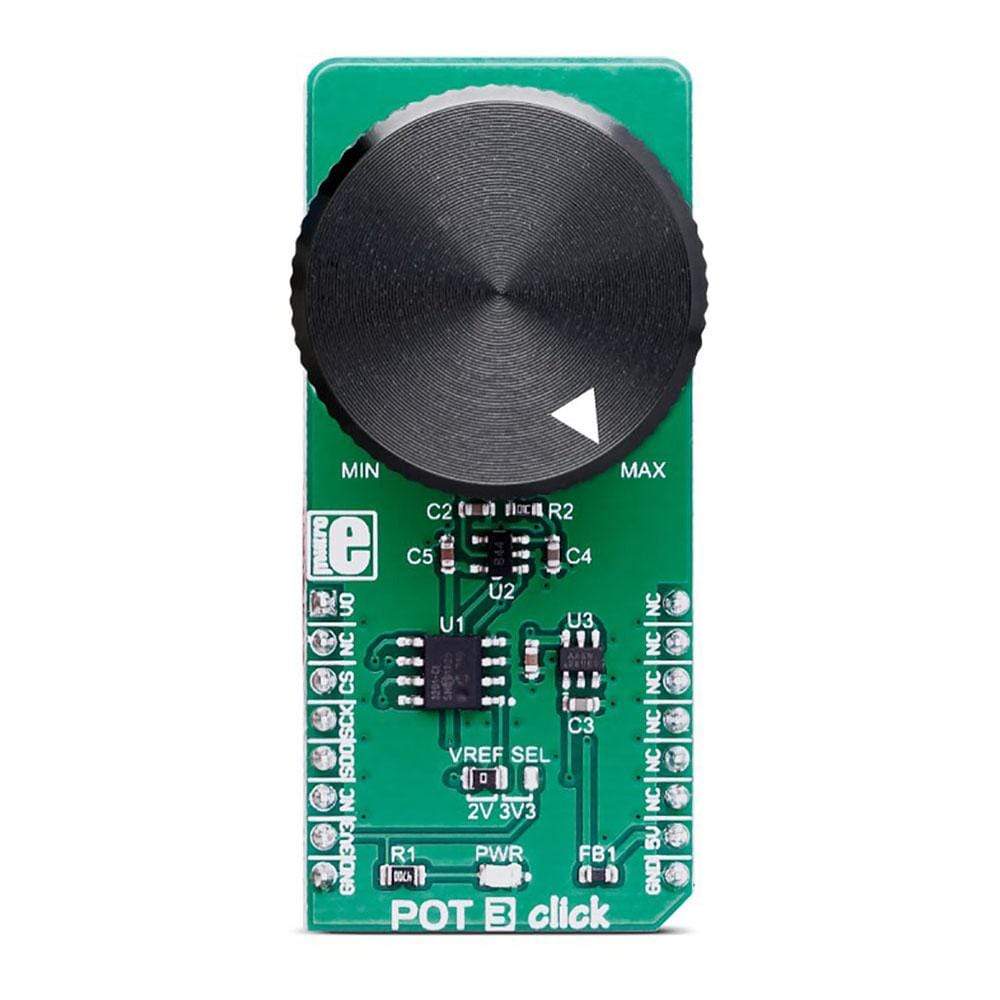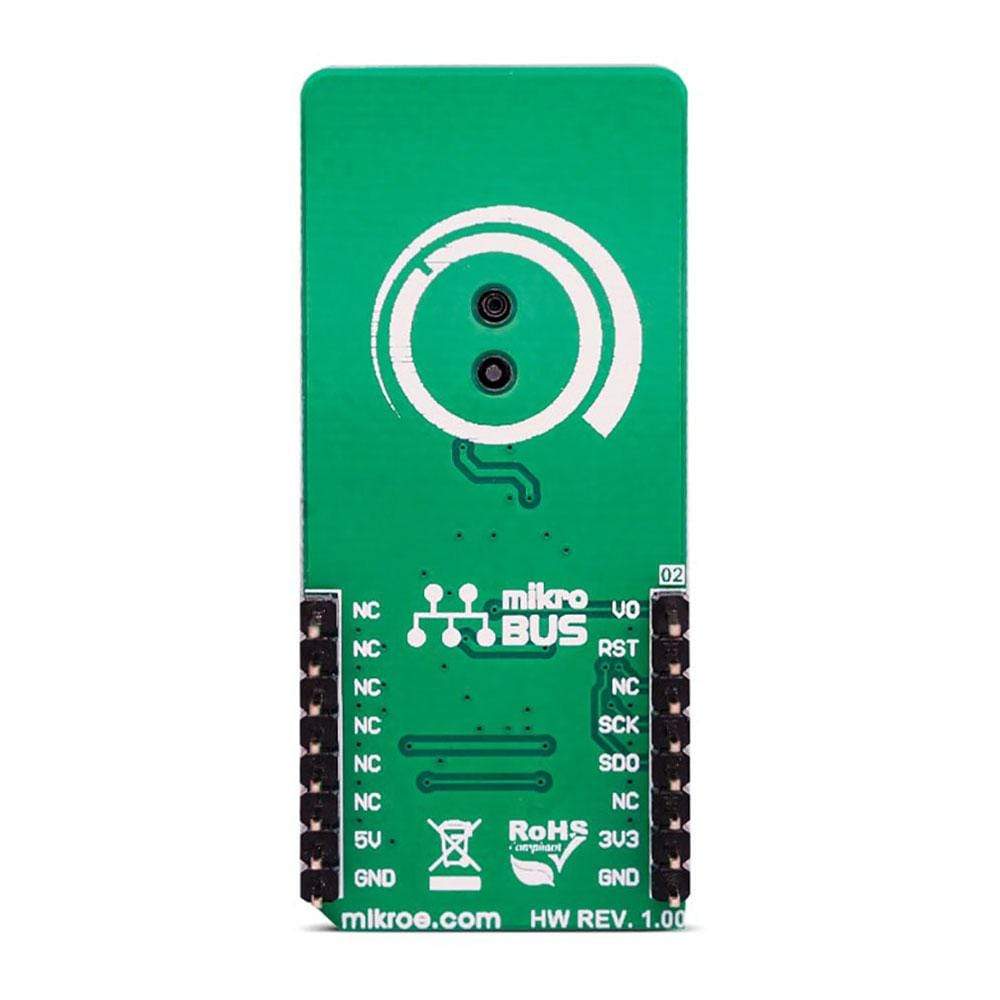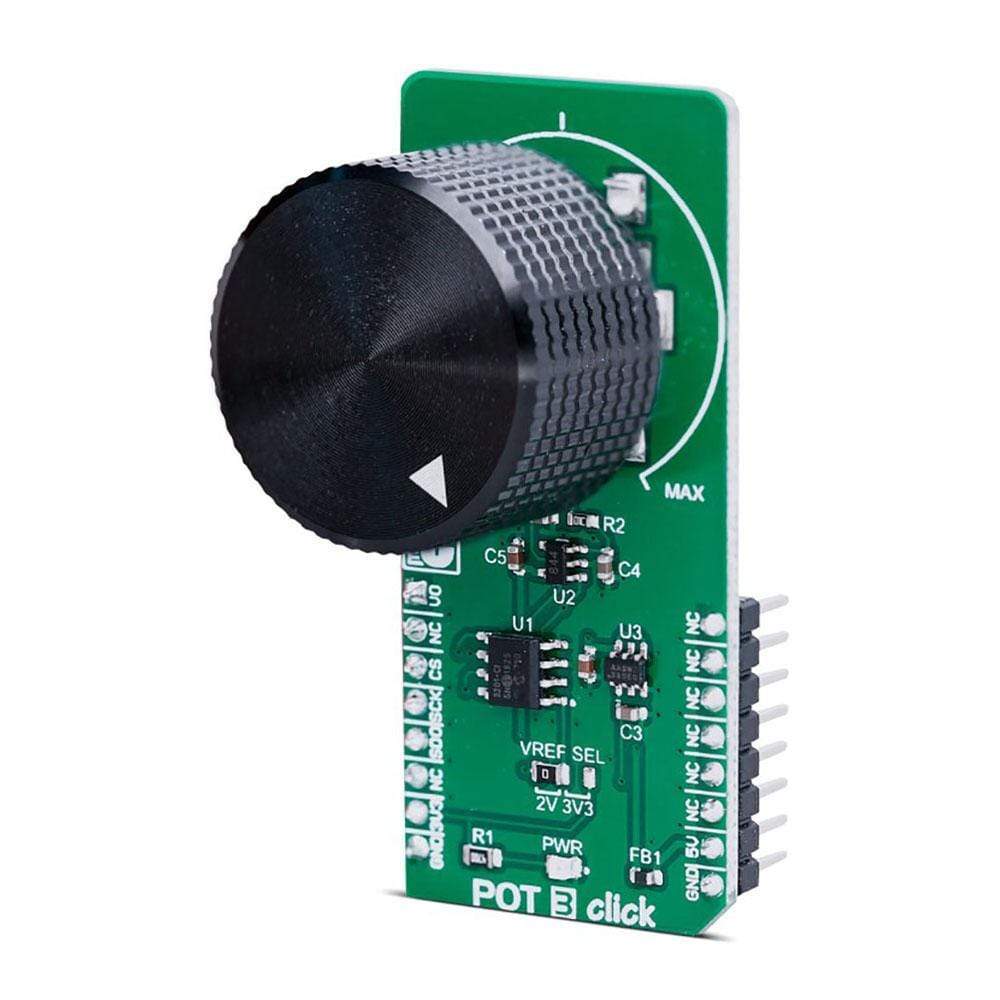
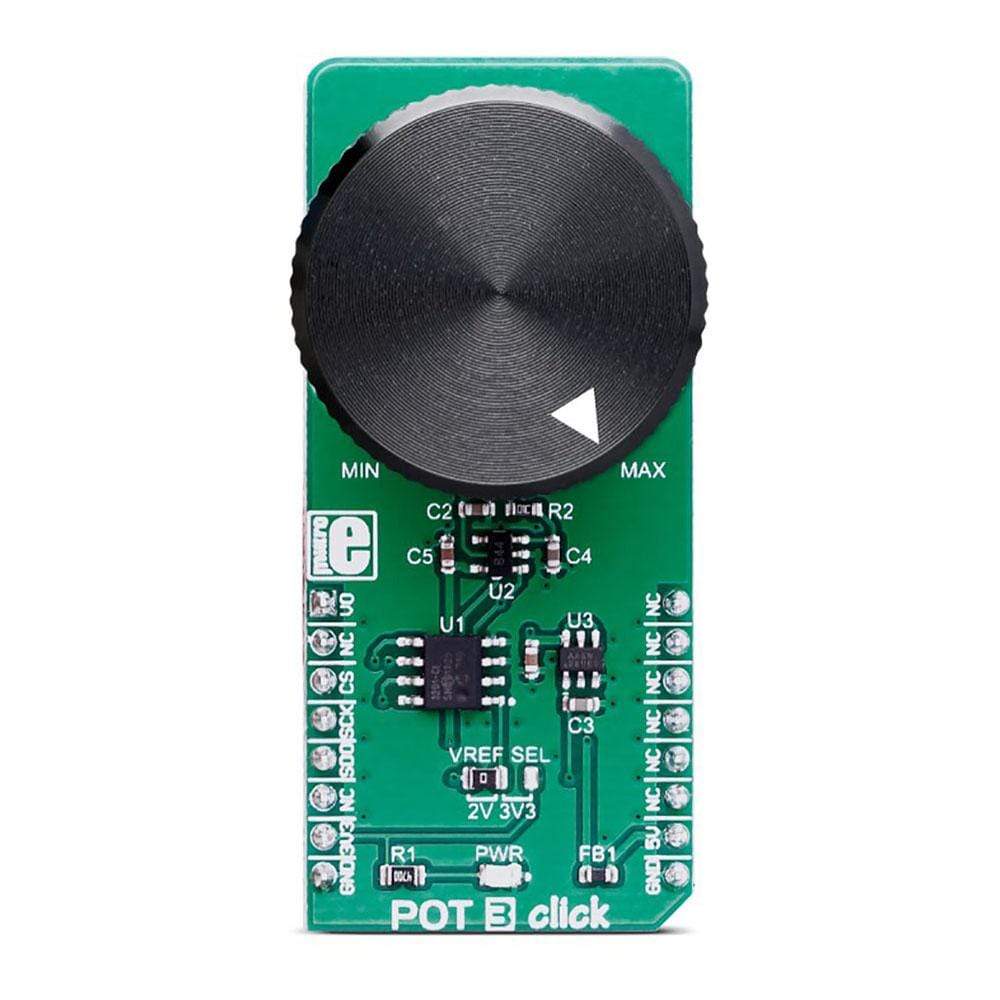
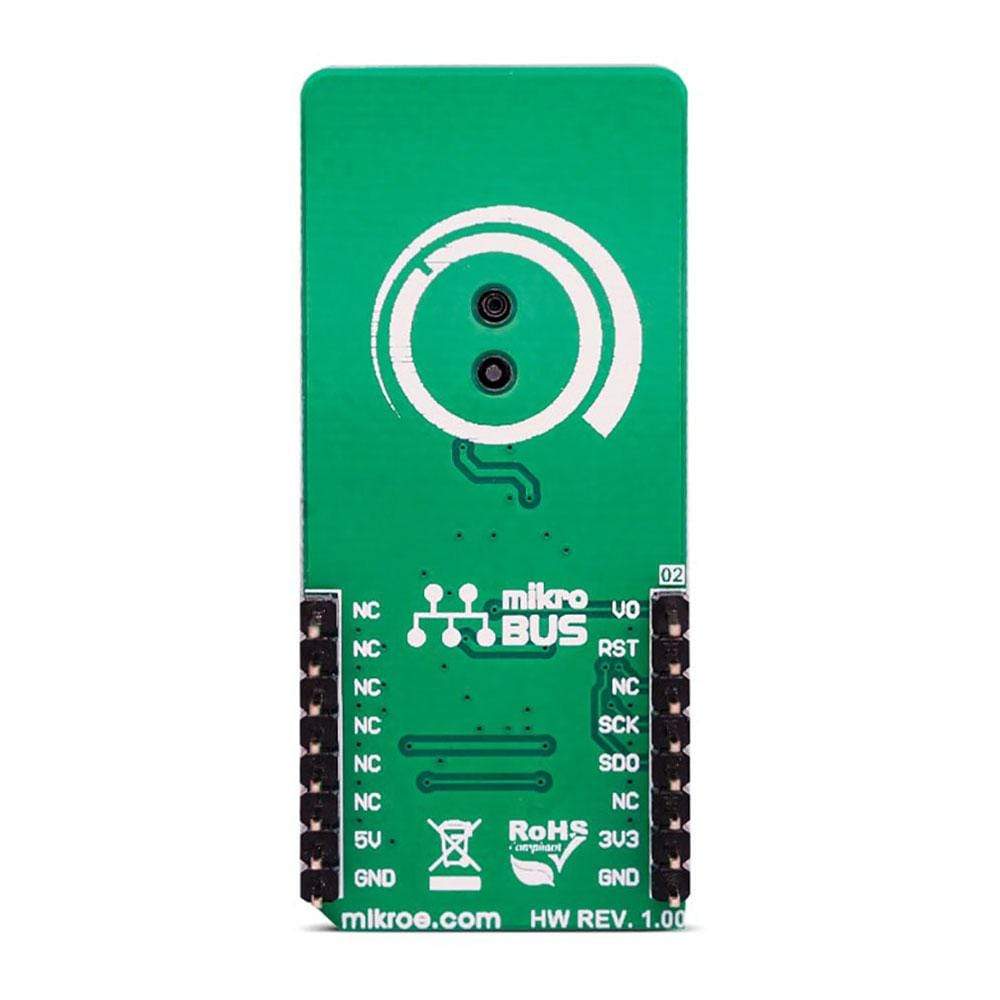
Overview
The POT 3 Click Board™ has an accurate selectable reference voltage output. By employing a high-quality 11mm, metal shaft potentiometer, this Click Board™ can provide very accurate voltage output. The onboard high-resolution 12-bit ADC can detect even the smallest move, faithfully capturing the smoothness of the slider movement, while digitizing its position. POT 3 Click Board™ is also equipped with the SMD jumper, which allows the maximum reference voltage to be selected between two typically used values: 2.048V or 3.3V. The output is buffered with a rail-to-rail buffering operational amplifier, which provides constant input and output impedance.
The POT 3 Click Board™ is supported by a mikroSDK compliant library, which includes functions that simplify software development. This Click Board™ comes as a fully tested product, ready to be used on a system equipped with the mikroBUS™ socket.
Downloads
Das POT 3 Click Board™ verfügt über eine genaue wählbare Referenzspannungsausgabe. Durch den Einsatz eines hochwertigen 11-mm-Potentiometers mit Metallschaft kann dieses Click Board™ eine sehr genaue Spannungsausgabe liefern. Der integrierte hochauflösende 12-Bit-ADC kann selbst die kleinste Bewegung erkennen und die Laufruhe der Schieberbewegung zuverlässig erfassen, während seine Position digitalisiert wird. Das POT 3 Click Board™ ist außerdem mit einem SMD-Jumper ausgestattet, mit dem die maximale Referenzspannung zwischen zwei üblicherweise verwendeten Werten ausgewählt werden kann: 2,048 V oder 3,3 V. Der Ausgang wird mit einem Rail-to-Rail-Pufferoperationsverstärker gepuffert, der eine konstante Eingangs- und Ausgangsimpedanz bietet.
Das POT 3 Click Board™ wird von einer mikroSDK-kompatiblen Bibliothek unterstützt, die Funktionen enthält, die die Softwareentwicklung vereinfachen. Dieses Click Board™ wird als vollständig getestetes Produkt geliefert und ist bereit für den Einsatz auf einem System, das mit der mikroBUS™-Buchse ausgestattet ist.
| General Information | |
|---|---|
Part Number (SKU) |
MIKROE-3691
|
Manufacturer |
|
| Physical and Mechanical | |
Weight |
0.04 kg
|
| Other | |
Country of Origin |
|
HS Code Customs Tariff code
|
|
EAN |
8606018716623
|
Warranty |
|
Frequently Asked Questions
Have a Question?
Be the first to ask a question about this.

